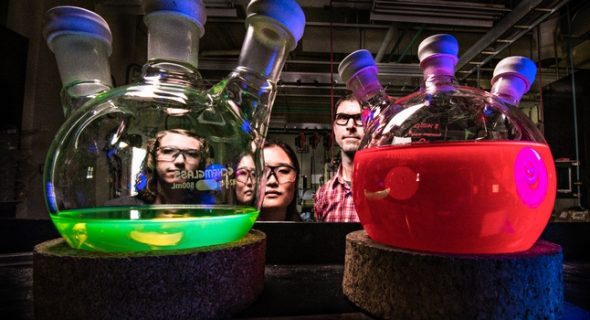Just over a year after Australian cleantech company Dyesol claimed to have achieved efficiency levels of 10 per cent in its perovskite solar cells, US researchers claim to have topped that, with a breakthrough that could also work to fast-track commercialisation of the technology.
As reported on RenewEconomy, perovskite PV applications have been one of the most-hyped areas for next generation solar PV technology in recent years, with researchers achieving startlingly fast conversion efficiency increases.
It has, however, also been plagued with stability and durability issues, with the material sensitive to moisture contact and high efficiency perovskite cells exhibiting high degradation rates.
Researchers at the US National Renewable Energy Laboratory (NREL) said last week that their work in fashioning a next-generation perovskite PV cell using so-called “quantum dots” had been successfully tested to have better than 10 per cent efficiency.

The work, part of the federal Energy Department’s Sunshot initiative, has also led to development of a method to stabilise the crystalline structure of all-inorganic perovskite material at room temperature rather than only high temperatures, according to Recharge News – a key step in commercialisation of the concept.
By using quantum dots – nanocrystals of cesium lead iodide (CsPbI) – the team has removed the need for the cells unstable organic component, “opening the door” to a high-efficiency perovskite cell that can operate at temperatures ranging from far below zero to well over 600 degrees Fahrenheit.
“Most research into perovskites has centred on a hybrid organic-inorganic structure,” said the NREL team, which was led by Abhishek Swarnkar. “Since research into perovskites for photovoltaics began, their efficiency of converting sunlight into electricity has climbed steadily and now shows greater than 22% power conversion efficiency.
“However, the organic component hasn’t been durable enough for the long-term use of perovskites as a solar cell.
“Contrary to the bulk version of CsPbI, the nanocrystals were found to be stable not only at temperatures exceeding 600F but also at room temperatures and at hundreds of degrees below zero,” said the researchers.
“The bulk version of this material is unstable at room temperature, where photovoltaics normally operate and convert very quickly to an undesired crystal structure.”
The 10.77 per cent efficiency is close to that of record quantum dot solar cells of other materials and surpasses other reported all-inorganic perovskite cells, Recharge said.
In Australia, perovskite development is being led by NSW company Dyesol, who in September 2015 claimed to have produced 1cm squared perovskite cells, at around 10 per cent conversion efficiency, and able to withstand accelerated degradation testing for over 1000 hours.
Dyesol’s progress has since been boosted by an ARENA grant of $449,000, which the Agency said would enable the company to create a roadmap to take its perovskite solar cell technology from the lab to a commercially available product.
A report earlier this year from US-based analysts Lux suggest recent advances in perovskite PV could lead to commercial roll-out of the technology “between 2019-21”.
According to Recharge, approaches to cell design have led to a transformative improvement in the economics of the technology, making it increasingly competitive with market-dominant crystalline silicon (CSi) and thin-film, which boast efficiencies of 17-23 per cent.








